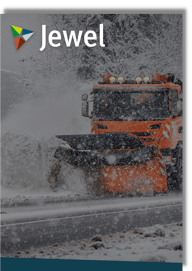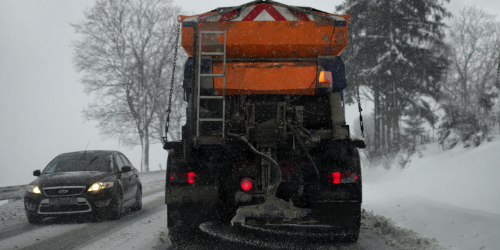Good Winter Maintenance has everything to do with the spreading activities. Is there enough spreading? Is it spreading in the right places? And is it done on time? There are many issues that play a role in making a spreading campaign a success. Instead of listing these, we prefer to help you achieve an optimal spreading action. This can be done with the help of three methods, which you can read in this blog.
Method 1: manual control of the spreader and optimization of routes
Gritters drive out preventively or curatively in the event of (risk of) slippery conditions, and drivers then ensure that spreading is done where necessary. They need to know how much salt to sprinkle and where to set which symmetry. But how do you optimize this? And what do you do when your regular drivers fall ill?
Our tips for optimizing spreading actions:
• Provide a clear briefing per route. Indicate clearly where in the route different spreading should be done. Pay attention to details, such as the lane to be driven in.
• Check whether the routes as they are currently driven are still the most logical. Can it be done more efficiently? Make the adjustment. Perhaps you can reduce the time per route by switching the order of certain streets.
Method 2: manual operation of the spreader with route guidance
If drivers currently determine the dosage and symmetry manually, there is another option in addition to the above options for optimizing the spreading action. By using route guidance, you can provide more certainty when carrying out the spreading work. Route guidance tells the driver where to go and what to pay attention to. This can vary from 'watch out, busy crossing' to navigation telling him to sprinkle the entire roundabout. The advantages?
• You are no longer dependent on the specific knowledge of one driver. In the event of illness or leave, you can therefore be sure of the quality of the spreading action.
• You have more influence on the spreading action because you decide what the navigation pronounces.
• When routes change, drivers don't have to remember them. The route is adapted on their tablet so they can get started immediately and can focus on driving the route safely and spreading the salt (mixture).
• You have real-time insight into the progress of the work, so you can always check whether documents have been completed or not. This is clear for both the planner and the driver.
Method 3: automatic spreading
The last method you can use to optimize spreading actions is automatic spreading in combination with voice-activated route guidance. With this method, the driver only needs to concentrate on driving the route safely and correctly while the spreading is automated. You determine the dosage and symmetry per road segment of the route in advance. Thanks to GPS, the spreader knows exactly where to spread and how. This gives you more certainty about the output of the spreading action. Sounds good, right?
How will you optimize spreading actions?
The first two methods have to do with optimizing your current way of working. This can be done by optimizing routes and improving the briefing to drivers or by supporting them with route guidance. The third method is probably really innovative: switching to automatic spreading. All methods have their advantages and provide more grip on spreading actions this winter. Do you want to know how you can get even more grip on slipperiness control?






